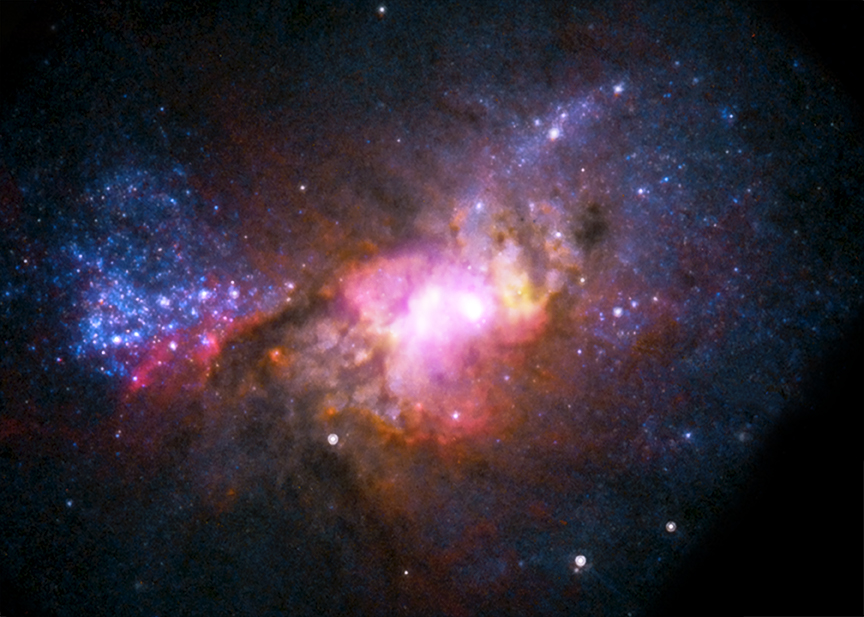
 Credit: X-ray (NASA/CXC/Virginia/A.Reines et al); Radio (NRAO/AUI/NSF); Optical (NASA/STScI)
Credit: X-ray (NASA/CXC/Virginia/A.Reines et al); Radio (NRAO/AUI/NSF); Optical (NASA/STScI)
Solving the Chicken-Egg Conundrum
Which came first, the black hole or the bulge? That's a question astronomers have been asking since it was first realized, decades ago, that nearly all galaxies harbor supermassive black holes in their centers. Do supermassive black holes provide an anchor point around which the rest of the galaxy can form? Or does the large mass buried at the centers of galaxies attract smaller black holes which combine themselves, bigger and bigger, into a supermassive monster? Perhaps an unusual galaxy known as Henize 210 can provide the answer. Henize 210 is a starburst galaxy, a galaxy forming stars at an enormous rate. It is also an irregular galaxy, lacking any obvious symmetrical distribution of matter, and lacking any strong central concentration of mass, as can be seen in the composite image above. In this image, optical data from the Hubble Space Telescope (in red, green and blue) shows the distribution of young, hot, massive stars newly formed in the galaxy. But X-ray data (from NASA's Chandra X-ray Observatory, shown in purple) and radio data (from the National Radio Astronomy Observatory's Very Large Array, shown in yellow) reveal a surprise: a compact, bright X-ray and radio source (seen in white near the center of the image). This X-ray/radio source suggests the presence of an actively growing supermassive black hole within Henize 210. These data give evidence that (at least in some galaxies) the growth of a supermassive black hole may precede the growth of the central bulge.
Published: February 7, 2011
<
HEA Dictionary ● Archive
● Search HEAPOW
● Other Languages
● HEAPOW on Facebook
● Download all Images
● Education ● HEAD
>

Each week the HEASARC
brings you new, exciting and beautiful images from X-ray and Gamma ray
astronomy. Check back each week and be sure to check out the HEAPOW archive!
Page Author: Dr. Michael F. Corcoran
Last modified Tuesday, 27-Feb-2024 10:06:41 EST


